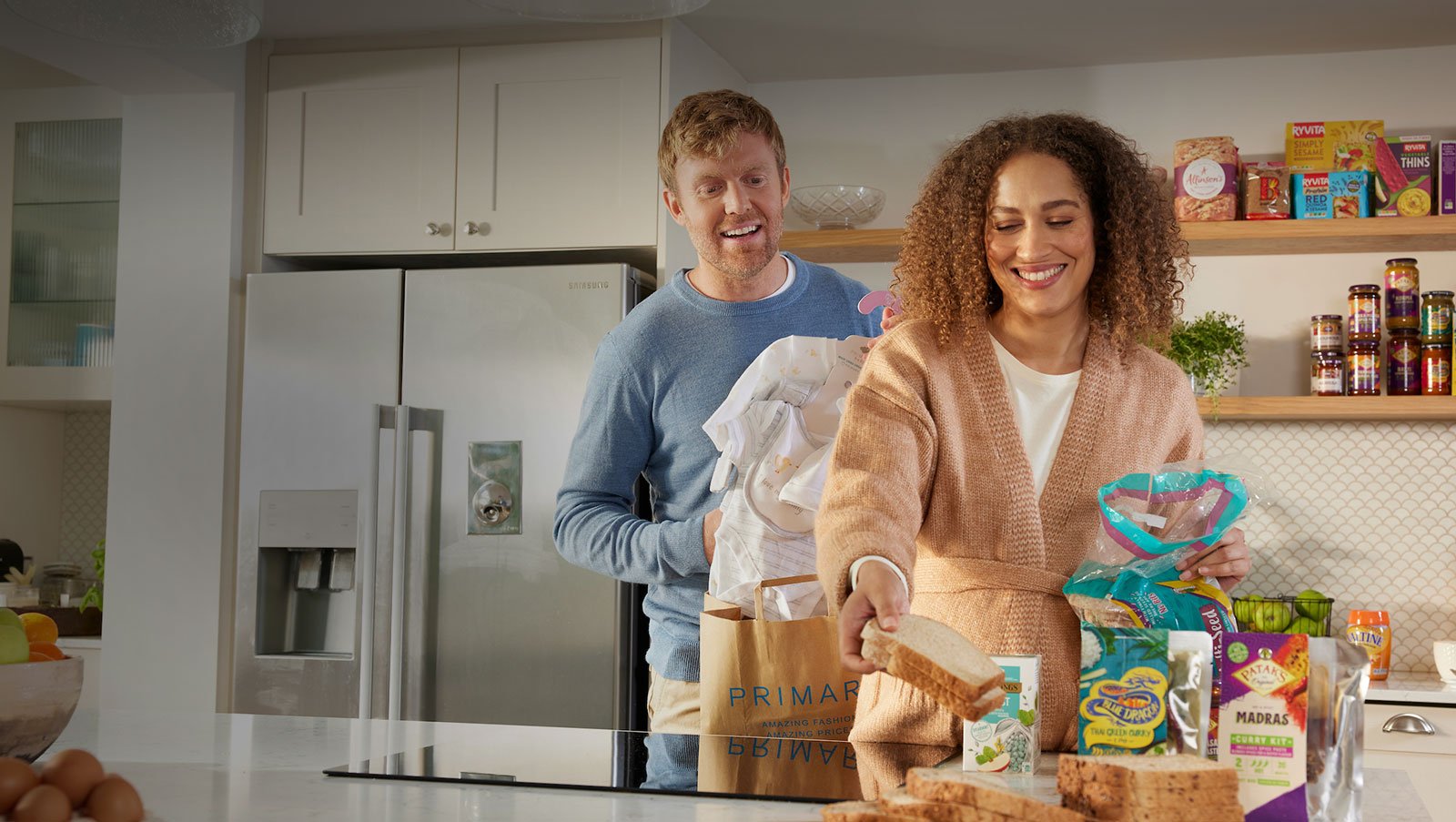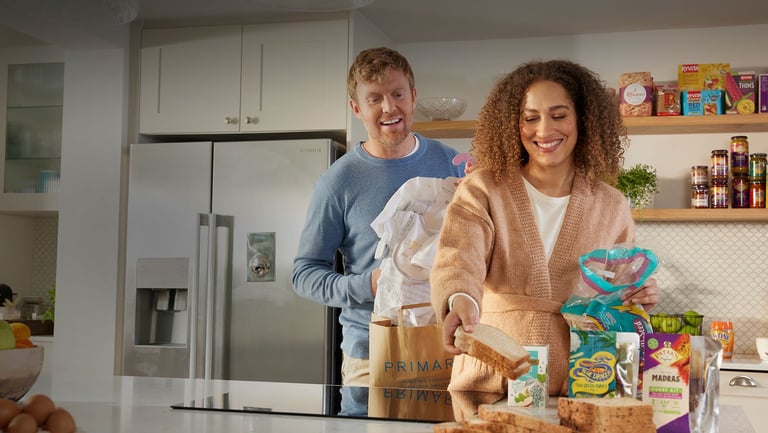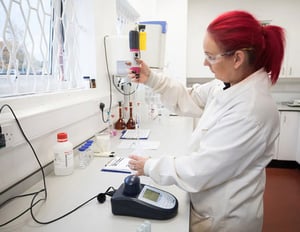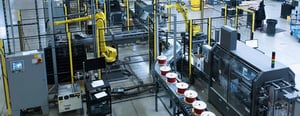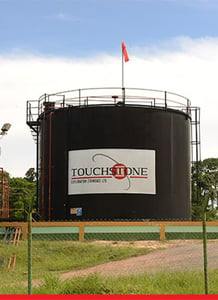Associated British Foods plc (LON:ABF) has announced its pre-close period trading update.
Trading summary for the half year
For the half year, we expect total sales for the Group to be more than 20% ahead of last year at actual exchange rates and more than 16% ahead at constant currency. Adjusted operating profit at the half year is expected to be broadly in line with the same period last year.
As outlined in our trading statement of 24 January, we continued to encounter significant cost pressures. Consumer spending has proven to be more resilient in this trading period than anticipated at the start of the financial year.
Our Food businesses continue to seek to recover inflation through cost mitigation and price increases. For the half year, we expect both aggregate sales and aggregate adjusted operating profit to be well ahead of the same period last year, albeit at a lower margin. Due to better trading, we now expect adjusted operating profit at Ingredients to be significantly ahead of the same period last year. Adjusted operating profit at Grocery is expected to be slightly lower than last year with inflation in input costs continuing to run ahead of pricing and cost mitigation activity.
Primark traded very well for the half year, total sales are expected to be £4.2bn, 19% ahead of the same period last year at actual exchange rates and 16% ahead at constant currency. Adjusted operating profit margin for the half year is now expected to be above 8%.
Full year outlook
For the full year, our expectation for the Group result has improved. Adjusted operating profit and adjusted earnings per share are now expected to be broadly in line with the previous financial year.
In the second half the recovery of significant inflation in our input costs remains a management priority but inflation has become less volatile and recently some commodity costs have declined. Macro-economic headwinds for the consumer remain and may weigh on spending in the months ahead. At Primark, we remain cautious about the resilience of consumer discretionary spending in the face of continuing inflation in the cost of living and higher interest rates.
For the full year adjusted operating profit in our Food businesses is expected to be modestly ahead of last year. After the very strong performance in the first half, we now expect Ingredients profit for the full year to be well ahead of last year. As expected, increased costs as a consequence of the much lower UK beet crop will reduce second half profit and bring adjusted operating profit for the full year at AB Sugar broadly in line with the prior year. We now expect the Grocery adjusted operating profit to be broadly in line with the prior year as the benefit of our pricing actions become more apparent.
At Primark, we now expect an improvement to our previous expectations of adjusted operating profit in the second half as a result of higher sales and some lower operating costs. For the full year we now expect adjusted operating profit margin to be above 8%.
We continue to expect finance income net of finance expense to increase substantially reflecting higher interest rates on our net cash balances. Other financial income will increase significantly as a result of the further substantial increase in the surplus in the Group’s defined benefit pension schemes. We expect an increase in the effective tax rate to around 25%, driven by the mix of tax jurisdictions and higher UK corporation tax rates.
Cash flow and funding
The cash outflow for the Group in the first half is expected to be some £900m. The period saw the payment of the final dividend of £235m for our 2022 financial year and the initiation of the £500m share buyback programme with some £140m repurchased to date. Working capital increased by some £300m in our Sugar businesses driven by two factors: the expected seasonal inventory build from the beet processing campaigns in our northern hemisphere businesses, and the higher valuation as a result of higher input costs. Primark working capital increased with the earlier handover of spring/summer inventory from our suppliers, higher levels of inventory needed to supply our growing store estate, and again higher valuation as a result of higher input costs.
Net cash before lease liabilities is expected to be some £0.6bn at the half year, compared to £1.5bn at the half year last year. This reduction has been mainly driven by an increase in working capital as a result of the rebuilding of inventories at Primark, which were at unusually low levels a year ago following a period of supply chain disruption, and higher valuation of inventories across all businesses. Investment in capital expenditure has increased and represents the higher run-rate which we expect over the medium term.
At the half year end, net debt is expected to be some £2.6bn, including lease liabilities of £3.2bn, giving a financial leverage ratio of 1.1 times. Total liquidity is expected to be £2.5bn.
References to changes in revenue in the following segmental commentary are based on constant currency.
Grocery
Revenue in the first half is expected to be some 10% higher than the same period last year as price increases continued to build throughout the period to recover cost inflation. Further pricing is under way but we continue to expect some erosion of adjusted operating profit margin at both the half year and the full year. For the half year, adjusted operating profit will be somewhat lower than the same period last year. For the full year, we now expect adjusted operating profit to be broadly in line with the previous year driven in part by the contribution from good trading at ACH.
Half year sales at Twinings Ovaltine are expected to be broadly in line with the same period last year. Twinings revenues are expected to be ahead driven by good performances in the US and Australia and continued growth of our Wellness teas. Ovaltine revenues were held back by disruption to imports into Myanmar and lower foodservice sales in China which were affected by the pandemic-related disruption. We are increasing marketing investment to continue to build the Twinings brands. Earlier phasing of the marketing investment in this financial year will result in a profit reduction in the first half but we expect an improvement in the second half.
Allied Bakeries has secured significant pricing, and volumes have been resilient, but inflationary pressures remain. Sales at Acetum, our leading Balsamic vinegar producer, grew in the first half and we continued to invest in capacity for aged and organic product. Pricing at AB World Foods and Westmill is also expected to drive sales higher.
Revenue growth will be strong at ACH, our edible oils and bakery ingredients business in the US, reflecting a good trading performance and pricing actions to cover inflationary costs. Both Mazola and Fleischmann’s improved their strong market share positions. Stratas, our joint venture in the US that supplies oils to the foodservice, ingredients and retail markets, continued to trade strongly. George Weston Foods in Australia is expected to deliver strong sales growth led by pricing. Our Tip Top baking business traded well but faced a number of inflationary pressures, specifically very high bread wheat prices due to a wet Australian harvest. Don KRC, our meat business, will deliver good sales growth with improved production volumes as labour availability improved.
Sugar
AB Sugar traded strongly in the first half with revenues expected to be some 26% higher than the same period last year due to higher sugar prices in Africa and Europe and an increase in bioethanol sales following the recommissioning of Vivergo. The adjusted operating profit margin at AB Sugar is expected to reduce as the contribution from higher sugar and coproduct prices was more than offset by the impact of higher energy costs and, for Vivergo, also higher wheat costs which led to a loss in the half year. Adjusted operating profit for AB Sugar is expected to be well ahead of the same period last year.
European sugar prices continued to improve over last year as a result of lower European sugar production. Estimates for EU sugar production in the 2022/23 campaign are now some 10% lower than last year due to lower yields caused by adverse weather and a smaller growing area. Both European and world sugar prices remain high. Our UK and Spanish businesses have largely contracted sales for the year at these improved prices.
UK sugar production for the 2022/23 campaign is still expected to be 0.74 million tonnes, down from 1.03 million tonnes from the last campaign. This fall in production reflects lower beet sugar yields following unusually adverse weather conditions. British Sugar has moved swiftly to secure alternative sources of supply and is working with customers to ensure continuity of supply. Energy cost inflation has been significant even though mitigated by government support. The shortfall in UK sugar beet production will result in much lower profitability at British Sugar in the second half. Since recommissioning, Vivergo, our bioethanol plant in Hull, has been operating to specification but will record a loss at the half year due to higher energy and wheat costs combined with lower bioethanol prices.
Sugar production at Azucarera will be lower than last year. The benefit of higher sugar prices was more than offset by higher energy costs in this first half.
We expect significantly higher profitability at Illovo with higher prices, increased sugar production in Malawi and Zambia, and an improved performance in Eswatini and Mozambique after the impact last year of strike action and flood damage respectively. The construction of the new production and packaging plant at Kilombero, Tanzania, is on track.
AB Sugar China trading performance was below the same period last year mainly as a result of lower sugar prices which resulted from a reduction in demand due to the temporary closure of hospitality venues caused by pandemic-related restrictions.
Agriculture
Revenue in the first half is expected to be ahead of the same period last year reflecting pricing taken to recover higher input costs. Market conditions continue to remain challenging with high commodity and energy costs. Lower UK feed volumes were the result of avian influenza and a reduction in the UK pig herd. China compound feed volumes were also lower as a result of low livestock prices. Margin and adjusted operating profit are expected to be slightly lower in this half year.
Ingredients
Our Ingredients businesses performed very strongly in the period with significant growth in sales expected at the half year. Compared to the same periods last year, we expect margin and adjusted operating profit to be ahead at both the half and full year.
AB Mauri exceeded expectation with both pricing to recover input cost inflation and good volume growth and is expected to deliver stronger revenue growth. ABF Ingredients, our specialty ingredients business, continued to trade strongly.
Retail
Trading at Primark has been good in all its markets, well ahead of expectations, and represents a material improvement in both the UK and Europe on the second half of our last financial year. We believe our proposition of great quality at affordable prices and attractive store experience is proving increasingly appealing to both existing and new customers. Early reaction to our spring and summer ranges has been very positive.
We expect Primark total sales to be 16% ahead of the same period last year driven by like-for-like sales 10% ahead as a result of higher unit volumes and higher average selling prices. Footfall increased strongly in both the UK and in Europe. Last year sales were disrupted by the consumer reaction to Omicron from December, which resulted in a reduction in footfall, and store closures for a period in the Netherlands and Austria. COVID-related public health measures remained in place in a number of European countries into the spring.
The increase in weighted average retail selling space was more meaningful in the period, at 3%, and follows the acceleration of our store opening programme. All the new stores opened in the period are performing well and have high sales densities. We expect retail selling space to be 17.8 million sq ft at the half year which compares to 17.0 million sq ft a year ago.
As a result of this strong trading, we now expect adjusted operating profit margin to be above 8%. This compares to last year’s first half margin of 11.7%. The margin reduction is the result of the increase in the cost of bought-in goods, driven by the significant strengthening of the US dollar against sterling and the euro, higher freight rates, and inflation in labour and energy costs.
Trading in the UK was particularly strong and we expect sales for the half year to grow by 15% driven by an increase in like-for-like sales of 14%. Primark’s share of the total UK clothing, footwear and accessories market by value, including online sales, was higher as a consequence, as evidenced by the latest 12 week data to 8 January 2023, which shows Primark’s market share continued to outperform, increasing from 6.3% last year to 6.8% this year. Footfall remains strong in major city centres as well as on high streets and retail parks.
Total sales in Europe, excluding the UK, are expected to increase by 18% driven by higher footfall with growth in all our markets. Like-for-like sales are expected to be 8% higher. We have had a very extensive store opening programme in this region, giving a 6% year-on-year increase in weighted average retail selling space. Of note, our new stores in Bucharest, Romania, and in Bari and Caserta, both in southern Italy, opened strongly and have continued to trade particularly well.
Sales growth of some 12% is expected in the US. Prior year comparatives were particularly strong with consumer spending supported by COVID-related government stimulus. Three new stores opened in the period and we remain on track to nearly double the number of US stores in this financial year.
Looking ahead to the second half, we remain cautious about the resilience of consumer discretionary spending in the face of continuing inflation in the cost of living and higher interest rates. Our expectation is that like-for-like sales growth in the second half will be lower than that achieved in the first half but, based on our experience to date, will be better than our previous expectation. As a consequence, sales densities will improve compared to the same period in the prior year. Sea freight costs have returned to more normal levels and energy costs are much reduced recently. However, the cost of bought-in goods will be higher due to the strength of the US dollar against sterling and the euro and higher wage costs are expected. Taking these factors into account, we now expect full year margin for Primark to be above 8%.
The rollout of Primark’s improved website continues. Already operational in the UK and the Republic of Ireland, the website is on track to be available to customers in Germany, Spain, France and the US soon with the remaining markets expected by the middle of the calendar year. Our Click and Collect trial of children’s products in 25 stores in the UK was launched in late November and continues.
Retail selling space has increased by 0.5 million sq ft since the financial year end and at 4 March 2023 we will be trading from 419 stores and 17.8 million sq ft of retail space, compared to 17.0 million sq ft a year ago. Thirteen new stores will have been opened in the period: our first store in Romania, Primark’s 15th market, three in the US, three in Italy, three in France, two in Poland, and one in Northern Ireland. We fully reopened our Bank Buildings store in the heart of Belfast, which was damaged by fire in 2018, and closed our temporary store in Donegal Place. We extended our stores at Sawgrass Mills, Florida, and Galway Eyre Square, Republic of Ireland, and closed as planned our store in Weiterstadt, Germany.
An investor and analyst call will be held at 09.00 GMT today, Monday 27 February 2023.
All participants must pre-register to join this conference using the Participant Registration link below. Once registered, an email will be sent with your unique Registrant ID. Participant registration page: https://register.vevent.com/register/BI28a854a4c3414333bc9485db4db6f3b4
Notes:
| – | Definitions of the alternative performance measures referred to in this announcement can be found in note 30 of our Annual Report and Accounts 2022. |
| – | The like-for-like Retail metric reflects the measurement of the performance of our retail stores on a comparable year-on-year basis. This measure represents the change in sales at constant currency excluding new stores, closures and relocations. It is measured against comparable trading days in each year. |
| – | Financial leverage is defined as net debt including lease liabilities: adjusted EBITDA for the year to 4 March 2023. |
| – | Total liquidity comprises net cash/debt before lease liabilities plus qualifying debts and credit facilities. Qualifying debt and credit facilities are those which are medium-to-long term, are committed and either contain no performance covenants, or where they do, they are assessed as highly unlikely to be breached in even a severe downside scenario. |
| – | Associated British Foods expect the number of shares at the end of the first half to be 780m, with a weighted average number of shares for this half year of 786m. |

